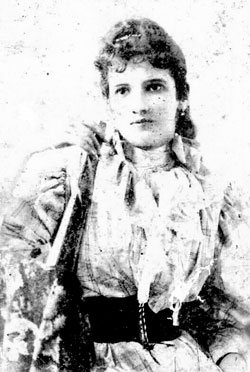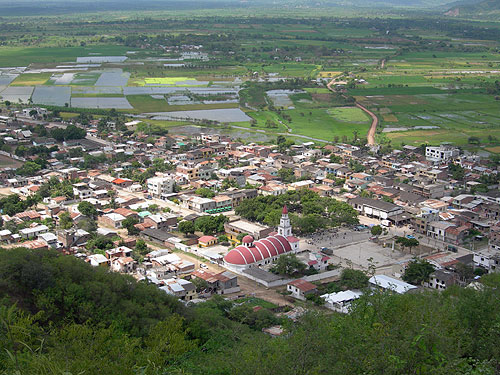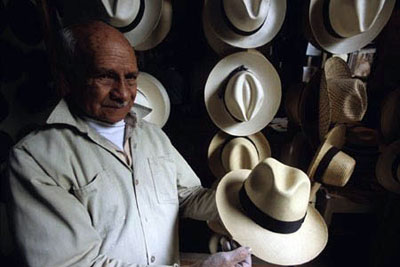|
Legend has
it that around the middle of the eighteenth century a
shipwreck occurred in the Spanish Pacific, off the
north-western coast of South America, from which a small
number of survivors on a small craft managed to reach the
shores of the Audiencia of Quito. They landed at Crucita, a
fishing village on the northern coast of the Gobernación de
Guayaquil. Among the survivors were a family who claimed to be
Irish, consisting of a young couple and their infant son. They
had lost all their belongings and salvaged only a briefcase
well stocked with silver coins and some jewellery, yet they
were fortunate enough to receive help from the local fishermen
who escorted them to the neighbouring Spanish town of San
Esteban de Charapotó.
Records of
this tragic accident have yet to be located, together with the
identity of the lost vessel which perhaps would shed light on
the reasons why an Irish family was travelling in Spanish
waters. The ship may have been on its way south, to Callao or
Buenos Aires, where Bourbon reformism had recently allowed
foreign merchants to operate, or perhaps north, on its way to
Panama. So the question remains: what was an Irish family
doing in the realms of the jealously guarded Spanish Empire,
generally hostile to outsiders? We know very little about them
except for the hispanicised name of the head of the family,
Juan Nepomucemo Macay and that of his young son, Albert Macay,
but we gather that they were well received by the Creole
families in Charapotó, since despite the nature of their
arrival they settled there and never left the town. This
article seeks to trace the history of this family and some of
its descendants and to investigate the ease with which they
integrated into local society and participated in some of the
most important political events in the early national period
in Ecuador.
The town
of San Esteban de Charapotó was located a short distance from
the harbour that bears the same name, at the edge of a
beautiful, emerald-green valley, which is striking to this
day, since the valley is surrounded by chalky, dry slopes, the
result of climatic conditions brought about by the Humboldt
Current as it flows from the Antarctic up the coast of South
America. According to colonial records, by the 1740s San
Esteban de Charapotó had only ten Spanish families (Alcedo y
Herrera). In the following decades demographic growth changed
the character of the town. Charapotó attracted Creoles from
other parts of the Audiencia and from neighbouring New
Granada, as well as newly arrived Spaniards, more than likely
also the result of Bourbon policies easing trade restrictions.
The area was out of the reach of colonial control, far away
from Guayaquil and Quito, centres of colonial government, and
so it offered excellent opportunities to engage in trade
unbeknownst to authorities. Furthermore, by the end of the
century, a locally manufactured product was swiftly becoming
the most important export commodity after cocoa in the coastal
region of the Audiencia: this was the toquilla hat,
later misnamed the Panama hat. Toquilla hats were woven
from the leaves of a native palm tree in nearby rural
communities by men, women and children, following ancestral
indigenous traditions. The sombrero ordinario had found
an important niche in the Caribbean markets and the torrid
valleys of Peru, and was much in demand in plantations to
protect the enslaved labourers from the scorching sun. Of
course there was also the ‘sombrero fino,’ so delicately woven
that it could be folded many times without losing its shape,
and which to this day carries a higher price. It was foreign
demand for the sombrero ordinario which boosted the
local economies, compensating for its lower price with the
volumes exported. Sleepy towns like Montecristi, Jipijapa and
Charapotó were abruptly awakened, as the Uruguayan writer
Eduardo Galeano would have it, under the magic touch of
commerce.
The Macays
fared well in Charapotó, more than likely engaging in the
export trade. They married their children Albert and Ramona
into prominent local families. In later generations, the name
of the founder of the lineage - the survivor of the shipwreck
- was always honoured: Juan Antonio Macay y de la Chica, the
son of Albert Macay, Juan Antonio Macay y Ureta, his grandson,
and Juan Francisco Macay Lozano, his great-grandson. Several
of their descendants were sent abroad to further their
education: Elio and Benito Santos Macay went to the Sorbonne
in Paris to become medical doctors, while Juan Francisco Macay
was listed by the British Census Commissioners in 1881 as a
native of Ecuador and science student in London. Others
attended schools in the United States of America. The reality
was that Charapotó was more connected to the outside world
than to elsewhere in the country.
|

Segunda María de la
Concepción Santos Macay (1870-1955), Guayaquil 1896
(Galería de Artes de Castillo y Alvarado) |
The lack
of roads made it easier to board a passing vessel and sail to
distant lands than to visit cities like Quito, the capital of
the Audiencia, and later the capital of Ecuador. Yet living
conditions in the province remained extremely primitive,
taking a heavy toll on well-trained young men returning to
their native land. Several among them were not up to the
challenge, succumbing to depression and even suicide.
After
independence from Spain in 1822 and secession from Colombia in
1830, liberalism became the main contesting force in Ecuador,
as was the case in other Latin American countries. Liberals
sought to modernise the country by separating church from
state, hoping to create a more secular society. They also
wished to implement economic regulations more in accordance
with the needs of the market. The struggle was particularly
strenuous and protracted in Ecuador, where a de facto
confessional state had been in existence since the early 1860s. Not
surprisingly, Charapotó, along with other merchant towns in
the province of Manabí, became strongholds for liberal ideas.
This was particularly because the main caudillo
(leader) of Ecuadorian liberalism, Eloy Alfaro, was a native
of neighbouring Montecristi, and the second-in-command,
Leonidas Plaza Gutierrez, twice president of Ecuador once the
liberals seized power, was a native of Charapotó.
The Macays
could not remain indifferent to this struggle since it played
out right in their hometown. Early on in the liberal struggle,
Charapotó was burned to the ground by government forces as a
reprisal for a liberal manifesto issued by Manuel Santos
Centeno, a grandson of Ramona Macay. Another member of the
family, Antonio Macay, was appointed by Alfaro ‘Comandante de
Armas de Manabí y Esmeraldas' in 1883, in one of Alfaro’s many
attempts to oust conservatives from power. Exiled in Panama
during most of his adult life, Alfaro had sacrificed all of
his resources and his family’s well-being to the liberal
cause, orchestrating military campaigns over and over until he
finally succeeded in 1895. Fortunately for Alfaro he had a
benefactor who looked after his every need, Jose Miguel Macay
Lozano. Pepito Macay, as he was called, had left
Charapotó along with other families when the town was
destroyed by fire. He moved to El Salvador in Central America,
where he acquired great wealth in the mining industry. A close
friend of Alfaro, he looked after his every need, even
bequeathing partial ownership of his mining venture to Alfaro
so that he could enjoy a steady income to support his family.
The only condition was that Alfaro cease his political
activities, something that of course Alfaro was unwilling to
accept (Santovenia 1943: 70-71). In his private correspondence
Alfaro always spoke fondly of his friend and was greatly
saddened when news of Macay’s death reached him while
campaigning in Esmeraldas (Andradre 1916).
The Macays
were a prolific clan. As a quick search on the Family History
webpage of the Church of Latter Day Saints shows, there are so
many listings for the name Macay in Charapotó and its
surroundings that the surname would seem to be indigenous to
the province of Manabí rather than the result of a twist of
fate earlier in the eighteenth century. Of course not all of
their progeny was successful, in particular those who bore the
stigma of illegitimacy. To this day one can find families
bearing the name Macay in impoverished rural communities,
leading a life no different from that of other peasants, their
heritage betrayed only by their fair complexion and perhaps by
blue eyes, a result of endogamous practices.
How did
their contemporaries perceive these taller, often red-haired,
sometimes blue-eyed neighbours? They highlighted their
eccentricities, coining across generations a phrase for that
purpose: la macayada (the Macay ways). And indeed tales
of their sometimes odd behaviour would rival those of the
mythical Macondo, as narrated by Colombian author Gabriel
García Márques. A scientist and inventor, formerly a student
in London, spending the rest of his life in a hut on an
isolated beach; a successful family man confining himself to a
soundproof dwelling, plastered with balsa wood for that
purpose, never to be seen again, even by his children who
dutifully delivered his daily meals to his doorstep. Perhaps
there was a trace of mental illness, also the result of
endogamous practices. Or perhaps these were the consequences,
to borrow the title of García Márques’ novel, of one hundred
years of solitude.
Carmen
Dueñas de Anhalzer
References
-
Alcedo y Herrera, Dionisio, Compendio
Histórico de la Provincia, Partidos, Ciudades, Astilleros,
Ríos y Puertos de Guayaquil, en las Costas del Mar del Sur
(Madrid: Edición Facsimilar, n.y.).
-
Santovenia, Emeterio, Vida de Eloy Alfaro (Havana:
Editorial Trapecio, 1943).
- Andrade. Roberto, Vida y Muerte de Eloy Alfaro (New
York: York Printing, 1916). |




